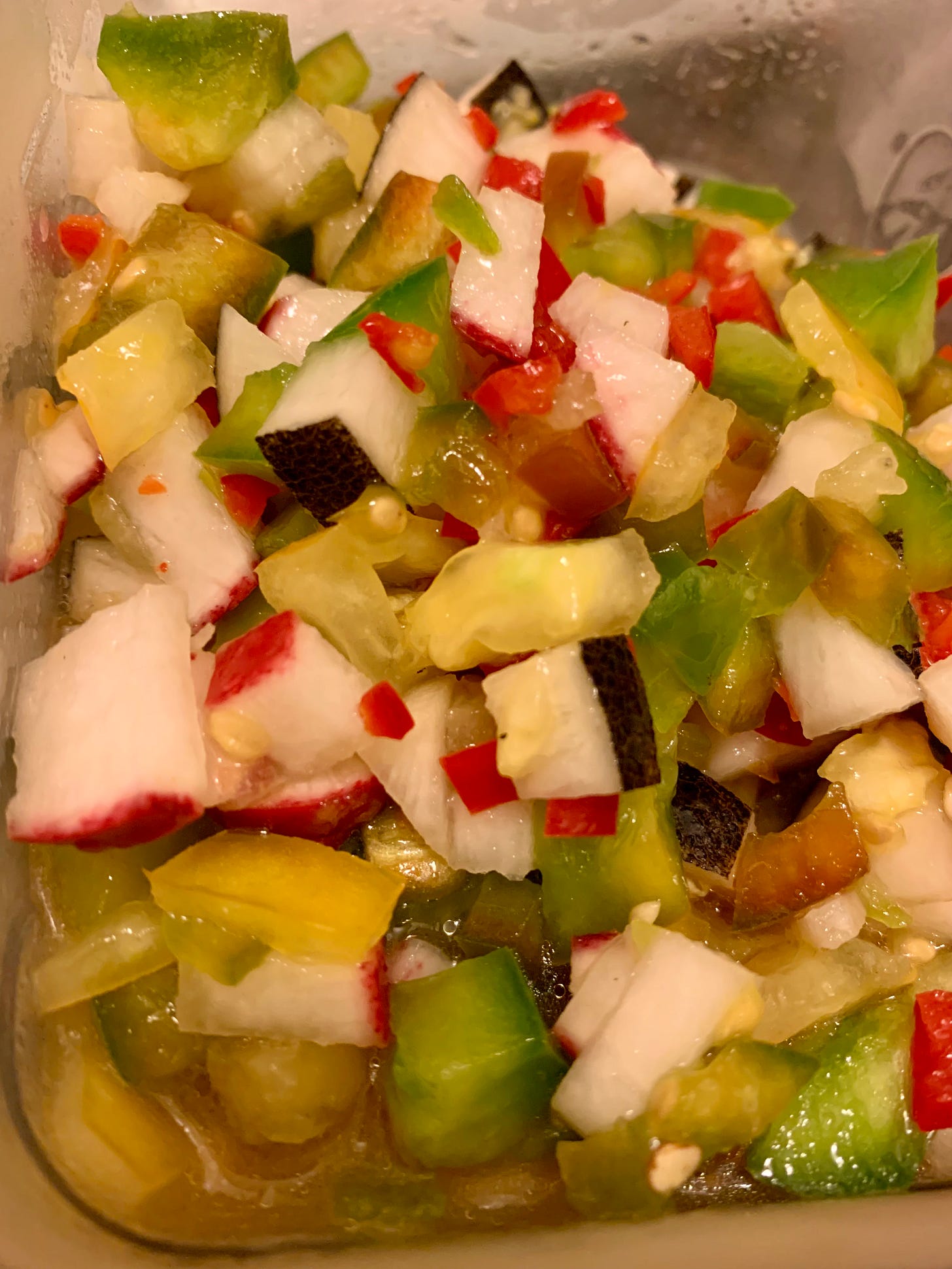Comfort Dish: Variations on Congee Recipe
As the weather turns and the days are shorter, we seek out comfort food, I wanted to share some variations I made on this classic rice porridge dish.
Recently I wanted to cook one of my favorite comfort dishes, congee. Congee is a Chinese rice porridge* simmered on the stove for several hours (or less if you use the frozen technique!), seasoned with aromatics and served simply or more ornately with varying toppings of meat and vegetables. When I made this batch in October, I picked up some additional ingredients and let myself get creative. I made a batch of congee with pork ends, onion, garlic, and shiitake mushrooms, but then I added sautéed sweet potatoes and cauliflower and a chilled mix of tomatoes, peppers, radishes, and chili.
*As I prepared for this post I learned about a Japanese rice porridge called Okayu that uses less water than the amounts I’ve seen recommended for congee, and I am excited to try out this different technique in the future!
Tools
Large pot
Sieve
Measuring cup
Knife and cutting board
Ingredients
Congee
4 oz pork ends (or your favorite meat! If you’re adding tofu, I recommend using it as a topping instead.)
1 Tbsp ginger (to taste)
1 Tbsp soy sauce
1/2 pint shiitake mushrooms, chopped
1 onion, diced
4-5 cloves of garlic, chopped
1 cup rice, rinsed
7 cups water or broth
Cooked Veggies
Oil to coat the pan
1/2 satsumaimo (Japanese sweet potato), diced
1/2 cauliflower (mine was purple!), chopped
Soy sauce, to taste
Oyster sauce, to taste
Fresh Veggies
1 tomato, diced
1/2 bell pepper, diced
1/2 red daikon, diced
1/2 black radish, diced
1 Fresno chili pepper, diced
Dash of mirin
Dash of salt
Scallions, chopped for topping
Preparation
Rinse 1 cup of rice until clear. Place a freezer safe bag for 8 hours, or cook for a bit longer in step 3.
Marinate pork (or meat/meat substitute) with ginger and soy sauce for at least 10 minutes. Although the recipe recommends 4 oz of meat to 1 Tbsp seasoning each, increase amounts if you would like a heartier dish or double if serving 4. Prep shiitakes (thinly sliced or quartered, to your preference), dice onion, and slice or mince garlic (can also leave whole).
Heat oil in the pot and add meat and aromatics, cooking until soft. You can remove them from the pan when done, but keep warm until serving. Over medium heat, add rice and 7 cups of water or broth. Bring to a boil, then lower heat and simmer for 20 minutes (frozen rice) or 1 1/2 hours (unfrozen rice). Stir occasionally as it thickens.
As the congee is cooking, prep sweet potatoes and cauliflower into chunks. (You can also add shiitakes to this step if you prefer.) Heat up a cast iron skillet and add oil. Add vegetables and cook until soft, then add oyster sauce and soy sauce, to taste. Reduce heat and stir, cooking until deeply aromatic but not too sticky (you can add a little bit of water if it gets too sticky too quickly).
After you add the seasoning to the vegetables, begin to prep the fresh sides, chopping tomato, bell pepper, radishes (I used daikon and black radish) and chili pepper (1 for medium heat). Add a dash of mirin and salt to coat and stir.
Once congee is finished, serve topped with sautéed and fresh vegetable mixes and chopped scallions.
I found this variation comforting and savory with the additional cauliflower and potato mix, and liked the added crunch from the peppers and radishes. Having the yummy meaty and aromatic base for the congee let me know I could have it plain for breakfast (and a soft-boiled egg) or with varying combinations of the toppings throughout the week. What kind of variations do you like to do with your congee?









